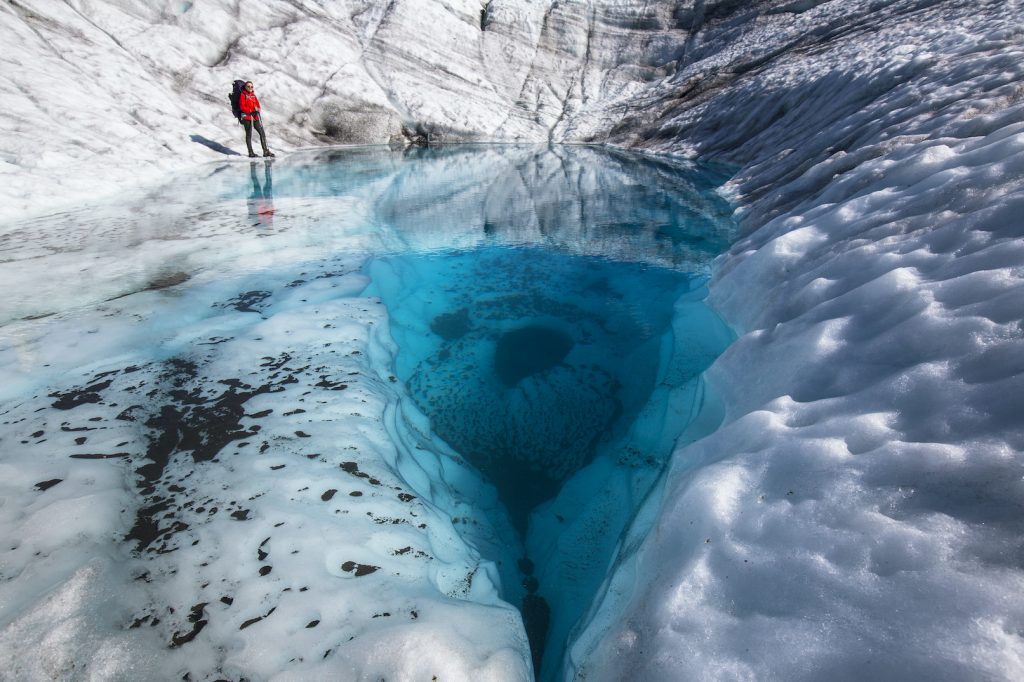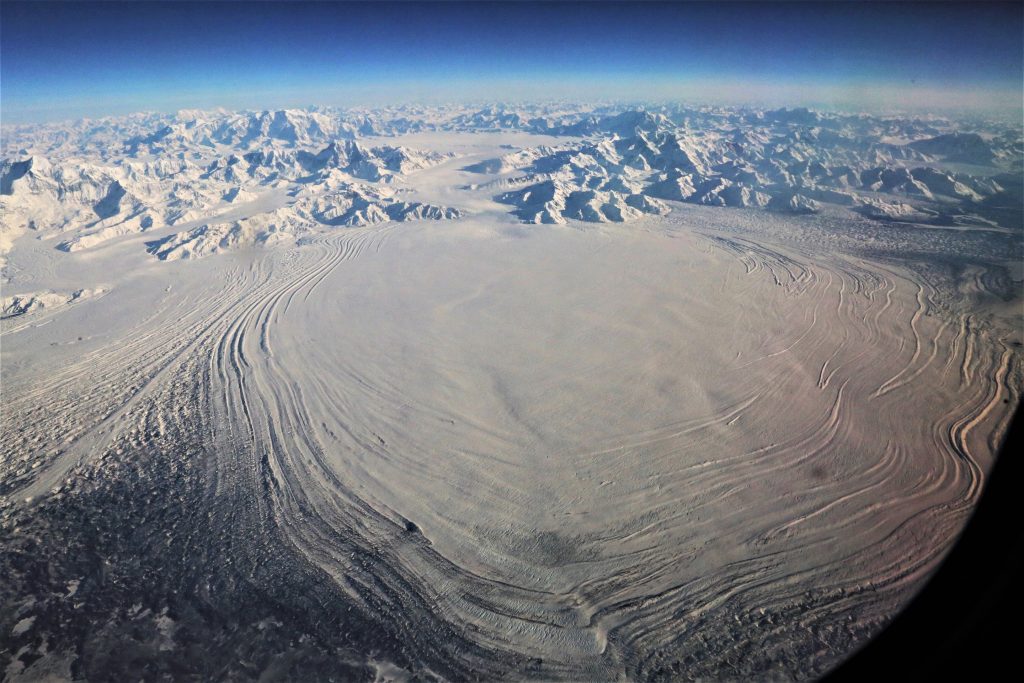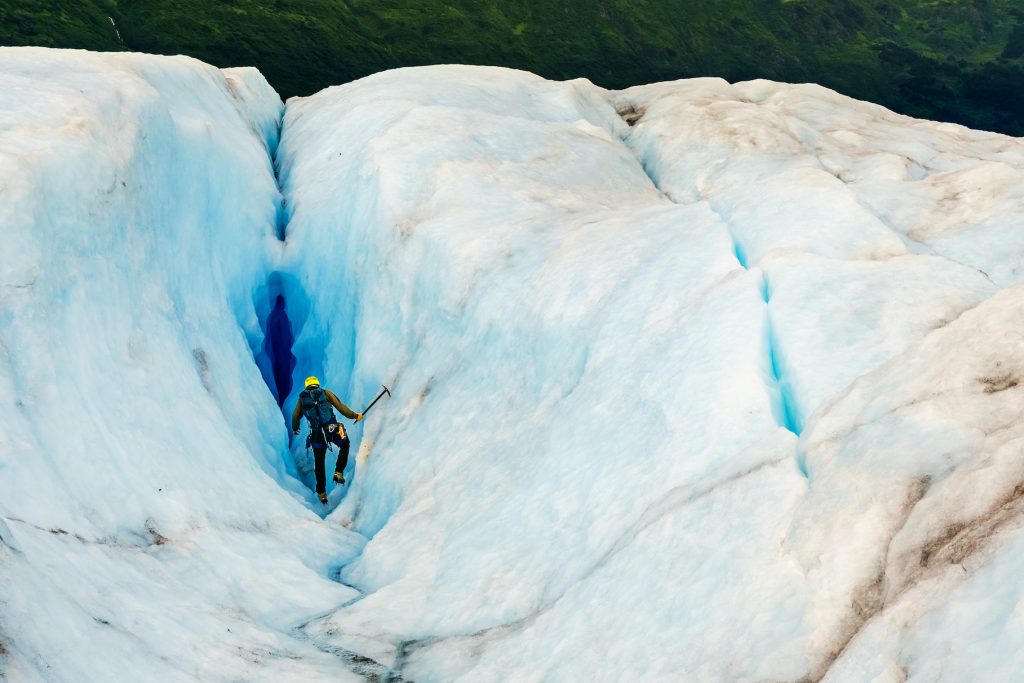Sunlight shines through seracs—jagged pinnacles of ice—on one of southcentral Alaska’s glaciers. Glaciers can appear all shades of blue and green, depending on the lighting and how compressed the ice is. Photo by Michael DeYoung, michaeldeyoung.com
Text by Susan Sommer.
So many glaciers, so little time to see all of Alaska’s. While the state has 616 named glaciers, estimates put the total number at around 100,000. The variety is stunning—on a day tour from Anchorage to Seward, you could see everything from small hanging glaciers nestled in cirques to a massive icefield to tidewater glaciers calving house-sized chunks of ice into the sea.
Glaciers in Motion
Glaciers up close are just as beautiful as from afar, with rich colors and arresting shapes. Though these rivers of ice at first glance appear static, they are in constant motion and always adjusting to climatic changes. That volatility is what helps create unique features like crevasses, caves, pools, and moraines; it’s also why glacier travel requires know-how or an experienced guide. Due to a warming planet, nearly all of Alaska’s glaciers are receding, more rapidly now than at any time in recorded history.

A silty, glacial river joins the clear waters of a spring-fed one in Denali National Park. Photo courtesy Alex VanDerStuyf, NPS 
Until the road across the Copper River flats washed out a few years ago, you could drive from Cordova to a campground opposite Childs Glacier. Local companies provide boat tours now so visitors can see ice calving into the river, and the U.S. Forest Service campground and recreation area remain open to the public. Photo by Ron Niebrugge, wildnatureimages.com 
Lateral moraines—rocks and dirt scraped from the mountain by the edges of a glacier—meet to form medial moraines. Shown here are Kennicott Glacier (left), Packsaddle Island (center), and La Chapelle Glacier (right). Photo courtesy Neal Herbert, NPS 
A hiker checks out a pool on Root Glacier in Wrangell-St. Elias National Park. Photo courtesy Jacob W. Frank, NPS
Visiting Alaska’s Glaciers
Many are easy to visit. Drive to Matanuska, Exit, Worthington, and Mendenhall (from Juneau). Boat to tidewater glaciers in Prince William Sound, Resurrection Bay, Glacier Bay, and the Inside Passage. Ride the rails, hike, or flightsee for more. Enjoy them vicariously here in Alaska magazine.

Flying up the Gulf Coast of Alaska on a clear day, you might see Malaspina Glacier just north of Yakutat. It’s the largest piedmont glacier in North America. A piedmont glacier forms when ice spills from steep mountains to relatively flat ground and spreads out in a lobe shape. Photo by Jeremy Pataky





Comments are closed.